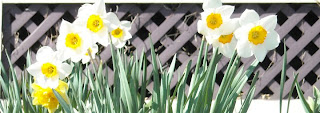Last summer, I began this blog with the idea to explore ideas about mindfulness as it connects to photography and teaching. As I've blogged about my own pictures and conversations I've had about photography with my friend Grace, it became very clear to me that we both use the art of photography as a way to be mindful of the world around us and to relax. However, it wasn't until a few weeks ago that I discovered that there is an actual term for this type of photography, contemplative photography, and other people who write books and blog about it. Now, one of my favorite books about photography is called, The Practice of Contemplative Photography: Seeing the World with Fresh Eyes, by Andy Karr and Michael Wood. It is teaching me more about one of my favorite arts and providing me with exercises to further enhance my ability to be mindful and artistic.
To put it quite simply, contemplative photography helps the photographer to be mindful of the world around her and to live an artistic life. According to Karr and Wood, "training in contemplative photography will deepen your ability to live a creative, artistic life...appreciating the details of our ordinary existence. The practice of contemplative photography will definitely increase your appreciation of the world around you, which is infinitely richer than you could ever imagine." They go on further to describe the contemplative mind as being "free from preoccupation." They describe a mind that is open, fresh, and receptive to whatever arises...a mind that is not bound up with either thoughts or emotions.
Filled with beautiful and thought-provoking pictures that serve as illustrations of this concept, the book also contains many interesting exercises that enhance the photographer's ability to enter a contemplative state of mind. According to Karr and Wood, the "purpose of these assignments is to help you connect directly with the visual world and to express that experience photographically. Assignments provide specific intentions for you to work with....The assignments have been developed for the purpose of training...as methods to help you align eye and mind."
Today I tried out the first assignment and really enjoyed the experience. First Assignment: Color.
Here were the guidelines for this assignment:
Look at color out of context without labeling it, without conceptual knowledge of what you are looking at. Just think about it as flashes of color.
Guidelines:
1. Black, white, gray, beige, are not colors
2. Look for bold, vivid colors
3. No graphic designs, words, letters, numbers, flowers, nature
4. Get in close and don't shoot anything extra
The assignment further instructs the photographer to:
--stop physically when stopped by a flash of color. Spend half a minute looking further, contemplating what stopped you without lifting your camera.
--understand what you see-- Where does your perception start/end? What's included/what's not? Is the perception horizontal or vertical?
--Look at the perception through your viewfinder and ask if that is what stopped you
The assignment even gives photographers a way to walk away from a shot without frustration:
When you struggle to take a picture or lose track of what stopped you, walk away & start over
What I love about contemplative photography can best be summed up by Beumont Newhall, a photographer, writer, and curator. "We are not interested in the unusual, but in the usual seen unusually." This first assignment of Color certainly helped me to see color in a new way today as well as ordinary objects within my neighborhood.
The photograph above was my favorite from the Color Assignment. On my own, I never would have thought to just isolate the colors as a point of interest for a picture. My eyes will definitely be more open in the future towards this type of composition.
The same flashes of color from a different perspective...
I like how this picture shows swatches of colors, making a three dimensional space appear to be two dimensional.
After my experience with the Color Assignment today, I am looking forward to future assignments and how they will help me be even more mindful of my environment. I also recently discovered a website for this book that contains the assignments and a gallery with readers' photos who have completed each assignment. http://seeingfresh.com/
























